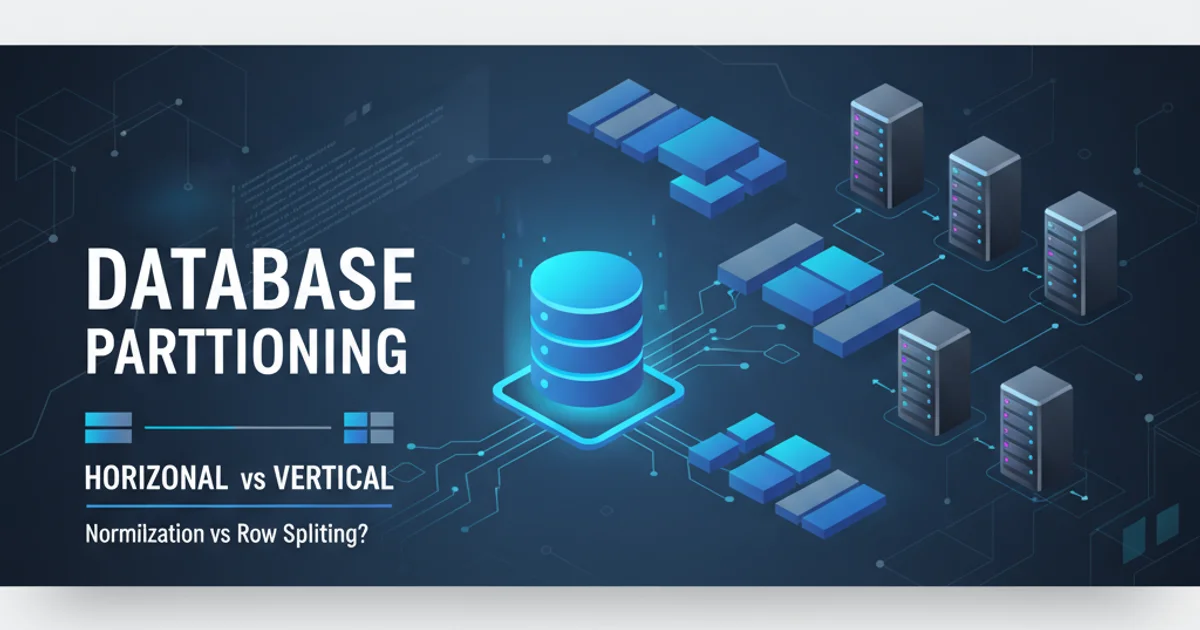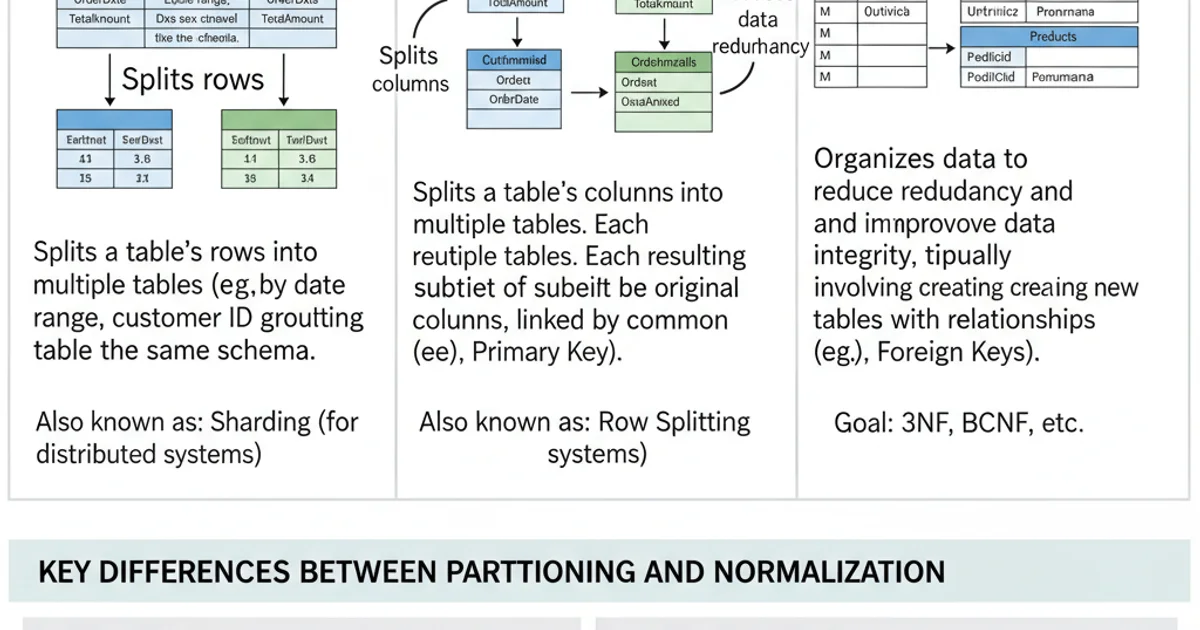Database partitioning - Horizontal vs Vertical - Difference between Normalization and Row Splitting?
Categories:
Database Partitioning: Horizontal vs. Vertical, Normalization vs. Row Splitting

Explore the nuances of database partitioning strategies, differentiating between horizontal and vertical partitioning, and clarifying their relationship with normalization and row splitting techniques for optimized performance and scalability.
Database partitioning is a crucial technique for managing large datasets, improving performance, and enhancing scalability. It involves dividing a large logical database into smaller, more manageable pieces. This article delves into two primary partitioning methods: horizontal and vertical, and distinguishes them from related concepts like normalization and row splitting. Understanding these differences is key to designing efficient and scalable database systems.
What is Database Partitioning?
Partitioning is the process of dividing a database table or index into smaller, independent pieces. The goal is to distribute data and workload across multiple storage units, which can be on the same server or across different servers. This can lead to significant improvements in query performance, manageability, and availability, especially for very large databases (VLDBs).
flowchart TD
A[Large Database Table] --> B{Partitioning Strategy}
B --> C[Horizontal Partitioning (Sharding)]
B --> D[Vertical Partitioning]
C --> C1[Distribute Rows]
D --> D1[Distribute Columns]
C1 & D1 --> E[Improved Performance & Scalability]Overview of Database Partitioning Strategies
Horizontal Partitioning (Sharding)
Horizontal partitioning, often referred to as sharding, involves dividing a table's rows into multiple, smaller tables. Each smaller table, or 'shard,' has the same schema as the original table but contains a subset of its rows. These shards can then be stored on separate database servers, distributing the load and allowing for parallel processing of queries. Sharding is particularly effective for read-heavy workloads and when the dataset grows too large for a single server to handle efficiently.
Vertical Partitioning
Vertical partitioning involves dividing a table's columns into multiple, smaller tables. Each new table contains a subset of the original table's columns, but all rows. The primary key is typically duplicated across all vertically partitioned tables to maintain relationships. This strategy is useful when a table has many columns, and different columns are accessed frequently by different applications or queries. For example, frequently accessed columns can be stored in one partition, while rarely accessed columns are stored in another, reducing the amount of data read from disk for common queries.
erDiagram
CUSTOMER ||--o{ ORDER : places
CUSTOMER {
int customer_id PK
string first_name
string last_name
string email
string address
string phone_number
datetime registration_date
}
CUSTOMER_PROFILE {
int customer_id PK
string address
string phone_number
datetime registration_date
}
CUSTOMER_CORE {
int customer_id PK
string first_name
string last_name
string email
}
CUSTOMER_CORE ||--o{ CUSTOMER_PROFILE : hasExample of Vertical Partitioning for a Customer Table
Normalization vs. Row Splitting
It's important to differentiate partitioning from normalization and row splitting, as these concepts, while related to database structure, serve different purposes.
Normalization is a database design technique aimed at reducing data redundancy and improving data integrity. It involves breaking down a large table into smaller, related tables based on functional dependencies. For example, moving address details into a separate Addresses table linked by a foreign key is normalization, not partitioning. Normalization focuses on logical data organization and integrity.
Row Splitting is a term often used interchangeably with vertical partitioning, but it can also refer to a specific scenario where a single table is split into two or more tables, each containing a subset of the original columns, but still residing within the same database or server. While it shares characteristics with vertical partitioning, the key distinction often lies in the intent and scale. Vertical partitioning is typically considered a performance optimization strategy for very wide tables, whereas normalization is a design principle for data integrity. Row splitting can be a form of vertical partitioning, but not all vertical partitioning is solely 'row splitting' in the sense of simply moving columns without considering the broader performance implications across different storage units.

Key Differences between Partitioning and Normalization
Practical Considerations
When deciding on a partitioning strategy, consider the following:
- Query Patterns: Analyze which columns are frequently accessed together. Vertical partitioning can help if different sets of columns are accessed by different queries. Horizontal partitioning is beneficial if queries often target specific subsets of rows.
- Data Volume and Growth: For rapidly growing datasets, horizontal partitioning (sharding) is often the go-to solution for scaling out.
- Maintenance Overhead: Partitioning adds complexity to database management, including backup, recovery, and schema changes. Sharding, in particular, can complicate joins and transactions across shards.
- Application Changes: Implementing partitioning, especially sharding, often requires significant changes to application logic to handle data routing and cross-shard operations.
In conclusion, horizontal and vertical partitioning are powerful tools for scaling databases, each addressing different performance bottlenecks. While normalization is a fundamental design principle for data integrity, partitioning is an advanced technique for optimizing performance and scalability. Understanding their distinct roles and applications is crucial for effective database architecture.